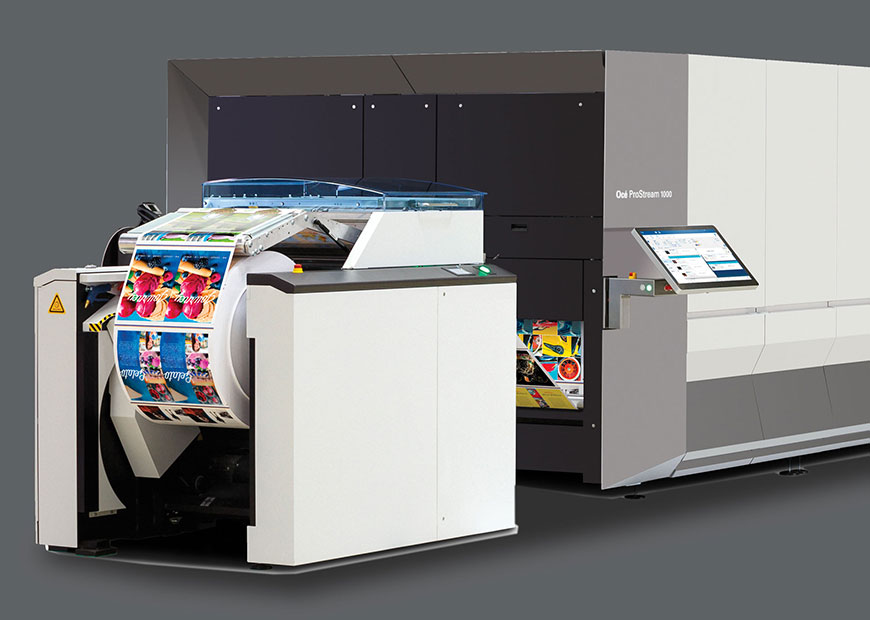Inkjet Technology Lures Commercial Printers
The general commercial printing world is full of heavy machinery, expansive finishing operations, and demanding clientele in search of a wide and ever-expanding range of print products. This sector encompasses every type of printing for every purpose, but it is under increasing pressure to deliver more operational efficiency and faster turnaround times. Commercial printers are looking for shorter run lengths, the ability to customize and personalize everything from marketing collateral to posters, and a faster path through their workflows from when a job is sold to when it is delivered. The technology that most intrigues commercial printers, and the one they believe can meet their needs, is inkjet.
Inkjet technology delivers speed, and the cost model versus toner-based digital technologies is attractive. Its image quality can match, and in some cases exceed, offset print. In addition, all of this comes with the ability to make every page printed unique without changing plates, stopping the press, or passing the substrate through additional touchpoints. Inkjet technology delivers on the promise of a white paper factory for commercial printers.
Inkjet’s true lure is its ability to deliver full-color without the makeready and prep of plates and to deliver variable data without a second pass. Today’s ink technologies deliver vibrant colors while innovations in priming and coating have all but eliminated concerns about the substrates available for inkjet printing. Of course, the mills have been busy, too. New inkjet-prepared substrates constantly enter the market—often at price points that make them an excellent choice for both short-run and long-run jobs. Commercial printers can now reliably print on everything from lightweight stock to corrugated board with the right combination of ink and press.
The enabling technology—the inkjet printheads—continue to evolve, getting faster and providing higher resolutions. The press platforms continue to evolve as well, with options for cutsheet and rollfed devices to meet most throughput requirements. The notion that inkjet printing is incapable of handling the demands of commercial printing is no longer valid.
Learnings from the Inkjet Summit
Given that today’s commercial printers are investigating inkjet technology for more of their volume, it should come as no surprise that many of these commercial printers accepted the invitation to the Inkjet Summit (April 8–10, 2019, in Ponte Vedra Beach, Florida). More than just a conference, the Inkjet Summit offers an opportunity to learn about the technology and how it is impacting printing businesses. Attendees can book time with the industry’s leading analysts and consultants, as well as the key vendors who provide solutions for inkjet printing.
The commercial printers that attended this year’s event came with questions. They looked at print samples, chatted with people who already own inkjet solutions, and saw a path to optimize their print operations with the power of inkjet. Some saw an opportunity to move short-run work to a digital device that limited the impact on their analog presses, almost eliminating the makeready normally required—opening the door to accept work with low margins on an analog device but acceptable margins on an inkjet press.
One of the biggest factors in printing is the cost of waste…but, with inkjet, more of the print you produce is sellable.
These commercial printers asked questions about educating their salespeople on how to sell the capabilities of an inkjet press. In addition to their interest in the ability to handle short runs, reprints, and work generally considered low value, these attendees were eager to learn more about selling data-driven commercial work that brings higher margins. They wanted to know if their existing sales teams could sell the capabilities of inkjet printing. They were interested in learning what would be involved in demonstrating the value of inkjet technology to their existing customers, and what it would take to locate new customers interested in inkjet printing’s capabilities. The news they took away is there are many resources to help them bring their sales teams up to speed and many options for demonstrating the wide range of products available in an inkjet environment.
Attendees also wanted to know how much of a change it would be to their workflows and how file preparation might change. Could they print appropriate color gamuts and heavy coverage on appropriate substrates for their clients’ needs? Would everything their graphic design teams know need to be thrown out in favor of new design techniques? Although the design teams needed tips and techniques, the good news is that the right color profiles and appropriate substrate selections handle most requirements of printing in an inkjet environment. Many commercial printers can take offset-prepared files and run them in their inkjet environments with little or no changes.
Commercial printers also wanted to understand the types of investments they would need to make to adopt an inkjet press and develop an inkjet story to help them grow their businesses. While the cost of the press and the infrastructure to support always requires investigation, the best place to start is the cost of print you experience today, including operators, training, maintenance, and waste. Educating operators on even the fastest and most sophisticated devices does not require a decade-long apprenticeship. In fact, operators typically become comfortable with these presses quite quickly. Training usually consists of a mix of on-site and online education, and maintenance is often part of their job.
One of the biggest—yet often unrecognized—factors in printing is the cost of waste. Dialing in analog presses can run through a lot of paper and ink, and the same is also true for press checks. Although there is still some dialing in that must be taken care of in the world of inkjet printing, the waste is often dramatically lower, meaning that more of the print you produce is sellable. This is something that should definitely figure into the total investment equation.
Your Next Steps
Commercial printers everywhere should be exploring how they can create a smart print manufacturing environment with inkjet technology, a solid workflow, and well-trained staff members. Inkjet technology is opening up a world of opportunity!
WATCH THE VIDEO

